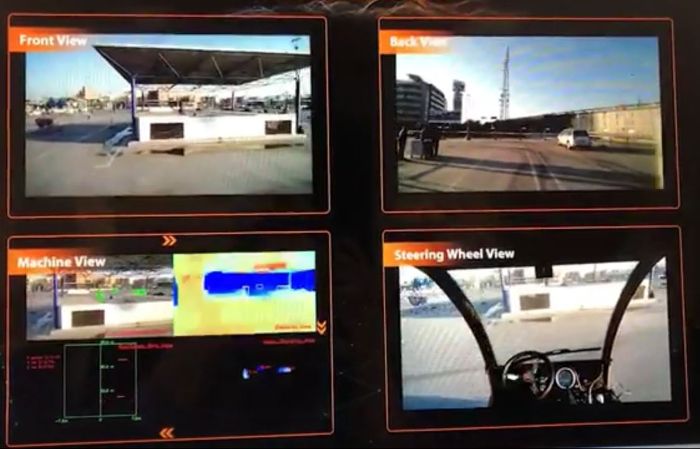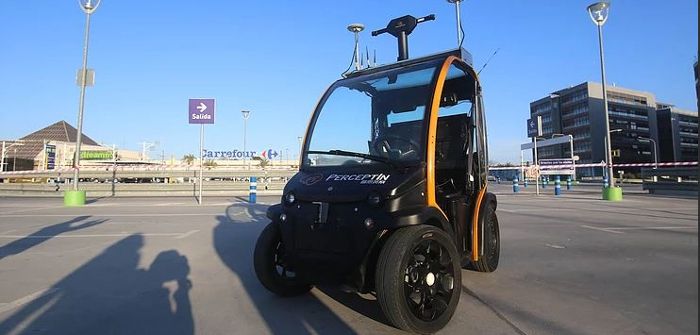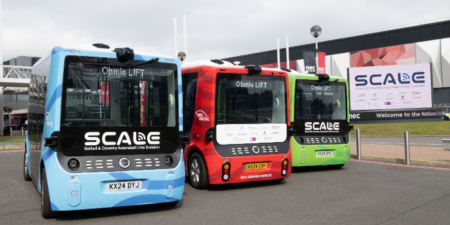PerceptIn, a California-based company focused on robotic mobility and visual intelligence, has showcased its autonomous DragonFly Pod running in a 5G cellular communications environment in Spain last week, as part of the Mobile World Congress (MWC) in Barcelona.
Now road-ready, the DragonFly Pod, combines a patented vision-based sensor fusion with a patented modular computing system to become a cutting-edge autonomous vehicle. By adopting 5G technology, PerceptIn’s DragonFly Pod can transmit information, such as real-time images, on the move.
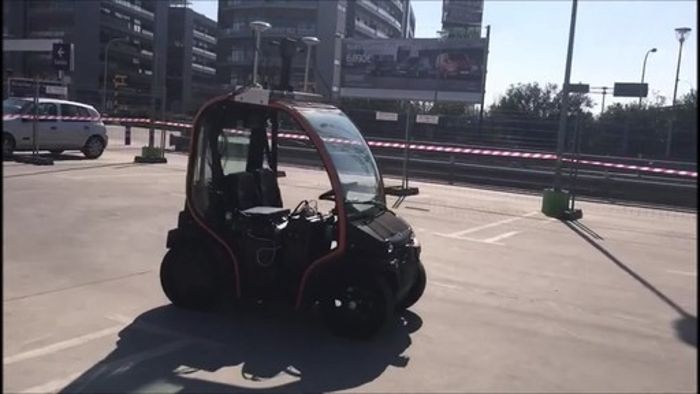 The 5G network’s high bandwidth and low latency will enable the Pod to receive and send large amount of real-time data, including location, destination and speed information, without any delay. Along with its telecommunications partners, ZTE and Orange, PerceptIn says autonomous driving would be more mature and more accessible with the help of 5G technology.
The 5G network’s high bandwidth and low latency will enable the Pod to receive and send large amount of real-time data, including location, destination and speed information, without any delay. Along with its telecommunications partners, ZTE and Orange, PerceptIn says autonomous driving would be more mature and more accessible with the help of 5G technology.
The capabilities of 5G technology could be the next catalyst for the development of the connected and autonomous vehicle (CAV) industry, by ensuring a reliable network providing all communication needed for road safety, which is what PerceptIn was determined to demonstrate at MWC.
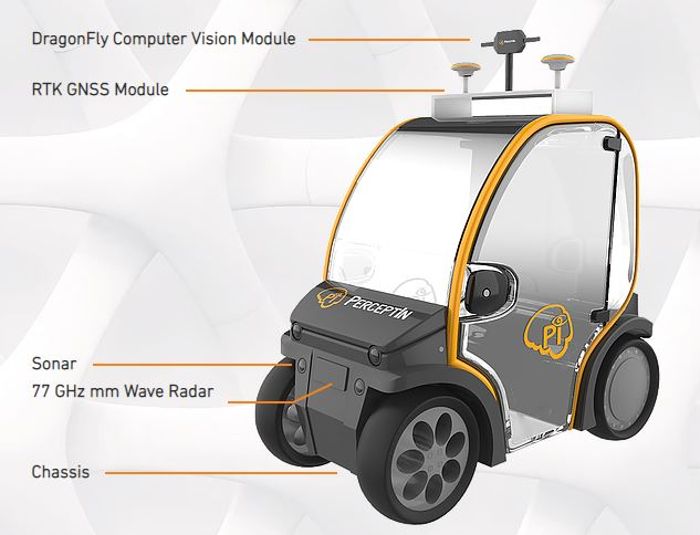
Compared to existing 4G networks, 5G significantly increases the sustainable bandwidth of both the uplink as well as the downlink. In a network of vehicles, 5G technology would enable real-time, effective communications to avoid collisions, congestion and various other hazards. The odometry data allows PerceptIn’s platform to locate a Pod within 8in (20cm), with the cameras adding the ability to construct a panoramic point cloud at 30fps (frames per second) to locate the Pod in a 3D space.
The DragonFly is equipped with millimeter wave radars and sonars, which help analyze the surroundings and respond accordingly. PerceptIn notes that the adoption of 5G technology has revealed a range of brand-new possibilities for connected driverless vehicles, with high-speed C-V2X (cellular vehicle-to-everything) enabling the direct communication capabilities of the Pod’s sensors, providing them with 360° non-line of sight awareness. The high-speed link enables the vehicle to detect what is farther down the road, even in bad weather conditions.
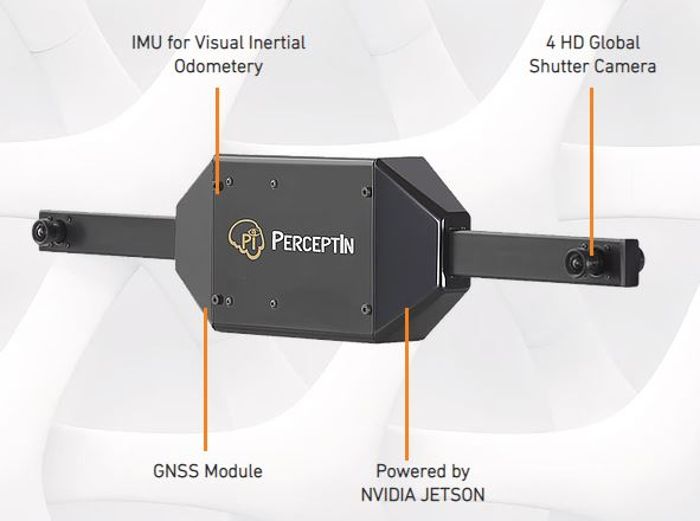 PerceptIn’s Pod is navigated by the DragonFly Sensor Module, a unique design being used on low-speed vehicles for object detection, localization and video streaming. The company has adopted a customizable approach to its CAV products by modularizing key components to allow those with limited engineering knowledge to integrate five or six components to build their own personal autonomous machine. With its headquarters in the USA, and with offices in Shenzhen, China, PerceptIn serves more than 100 customers globally and works on providing hardware and software solutions for the robotization of the next generation of products.
PerceptIn’s Pod is navigated by the DragonFly Sensor Module, a unique design being used on low-speed vehicles for object detection, localization and video streaming. The company has adopted a customizable approach to its CAV products by modularizing key components to allow those with limited engineering knowledge to integrate five or six components to build their own personal autonomous machine. With its headquarters in the USA, and with offices in Shenzhen, China, PerceptIn serves more than 100 customers globally and works on providing hardware and software solutions for the robotization of the next generation of products.
“Faster networks, such as 5G, means autonomous vehicles are going to become more available and safer,” said Dr Shaoshan Liu, chairman and CEO of PerceptIn. “We would like to bring a future of commercialization of autonomous technology, which will enable more efficient traffic flows and less traffic accidents.”
